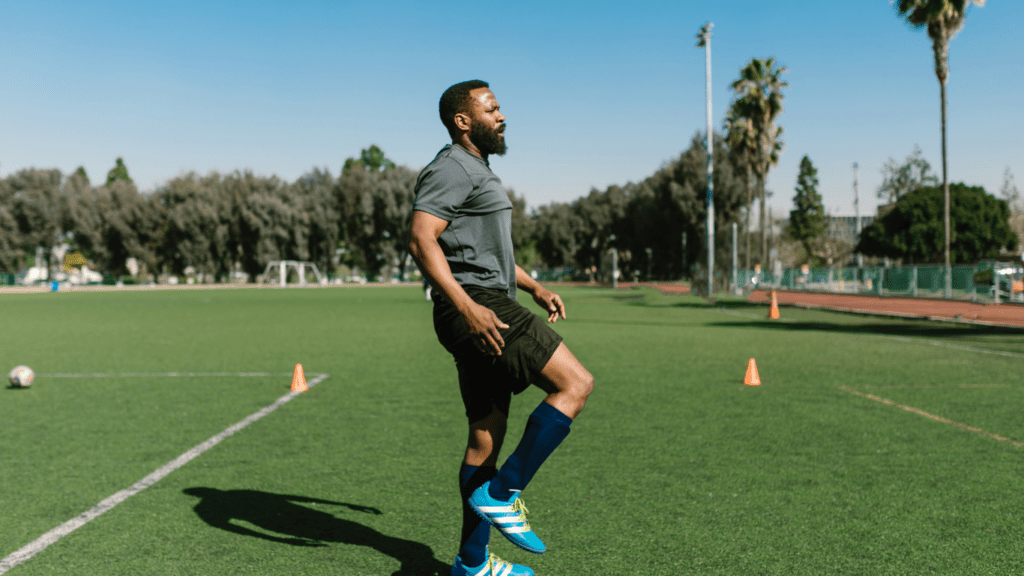When it comes to optimizing athletic performance, understanding energy systems is crucial. Every sport demands unique physical attributes, and tailoring workouts to meet those specific needs can make all the difference.
I’ve seen firsthand how athletes can enhance their performance by focusing on the right energy systems, whether it’s for endurance, power, or speed. In this article, I’ll explore how energy system training can be customized for various sports.
From sprinting to long-distance running, each discipline requires a different approach to conditioning. By aligning training methods with sport-specific demands, athletes can maximize their potential and achieve their goals more effectively. Let’s dive into the science behind energy systems and how to apply it to your training regimen.
Overview of Energy System Training
Energy system training focuses on enhancing an athlete’s performance by targeting specific energy pathways used during competition. These pathways include the phosphagen system, glycolytic system, and oxidative system.
Each system plays a crucial role in supporting various physical demands based on the duration and intensity of the sport. Understanding these distinct energy systems helps me tailor workouts for optimal results.
- Phosphagen System: This system provides immediate energy for short, high-intensity activities lasting up to 10 seconds, such as sprinting or weightlifting. It utilizes stored ATP and creatine phosphate for quick bursts of power.
- Glycolytic System: This system kicks in during moderate to high-intensity efforts lasting around 30 seconds to 2 minutes. It breaks down glucose for energy, producing lactic acid as a byproduct. Sports like 400m sprints and high-intensity interval training rely on this system.
- Oxidative System: This system supports prolonged, lower-intensity activities lasting more than 2 minutes. It relies on oxygen to convert carbohydrates and fats into energy. Endurance sports, like marathons and long-distance cycling, primarily utilize this energy pathway.
By assessing the demands of different sports, I design training regimens that emphasize the pertinent energy systems. This tailored approach enhances specific physical attributes essential for success in those sports. Incorporating drills, intervals, and recovery methods aligned with energy system requirements further maximizes an athlete’s performance potential. Doing so not only accelerates adaptation but also minimizes injury risk by ensuring the body remains conditioned for its specific requirements.
Importance of Tailoring Workouts
Tailoring workouts to specific sports demands enhances athletic performance by optimizing energy use and minimizing injury risks. Focusing on energy system training aligns with the physical requirements of each sport.
Specific Energy Demands of Different Sports
Every sport requires distinct energy demands that influence training. For example, sprinting relies heavily on the phosphagen system for immediate energy, requiring short bursts of intense effort.
Sports like soccer and basketball utilize both the glycolytic and oxidative systems, necessitating a combination of anaerobic and aerobic conditioning. Endurance sports, such as marathon running, depend primarily on the oxidative system for sustained energy over long durations, emphasizing aerobic capacity.
By understanding these specific energy requirements, I design targeted training programs that prioritize the relevant energy systems. Such an approach ensures that athletes develop the physical attributes necessary for their sport while improving overall performance and resilience.
Benefits of Customized Training Regimens
Customized training regimens provide numerous benefits that directly impact athletic performance. First, focused training enhances strength, speed, and endurance tailored to an athlete’s unique needs. Second, personalized programs promote efficient recovery strategies, reducing the risk of injury.
Third, athletes report increased motivation and engagement, which can lead to improved consistency in training. Incorporating sport-specific drills and exercises into regimens further develops the skills required for success.
Customized workouts not only lead to better performance outcomes but also foster a deeper understanding of the body’s capabilities and limitations, which is essential for peak athletic performance.
Types of Energy Systems
Understanding the three primary energy systems is crucial for tailoring workouts to specific sports demands. Each system plays a unique role in fueling athletic performance.
ATP-PC System
The ATP-PC system, or phosphagen system, provides immediate energy for short bursts of activity lasting up to 10 seconds. This system primarily fuels high-intensity efforts, such as sprinting or weightlifting, where quick energy release is essential.
I focus on exercises like sprints, jumps, or heavy lifts to enhance this energy pathway. Training at maximum effort with short rest intervals optimizes the efficiency of the ATP-PC system, allowing athletes to perform at peak levels during short-duration, high-intensity events.
Anaerobic Glycolysis
Anaerobic glycolysis provides energy for activities lasting between 30 seconds and 2 minutes, typical for sports like 400-meter sprints or high-intensity interval training. This system breaks down glucose without oxygen, producing lactic acid as a byproduct.
To train this energy system, I incorporate prolonged high-intensity intervals followed by active recovery. Techniques include circuit training or anaerobic sprints to improve lactate threshold and enhance the ability to sustain high levels of exertion.
Aerobic Energy System
The aerobic energy system supports prolonged, lower-intensity activities, such as marathon running or cycling. It relies on oxygen to convert carbohydrates and fats into energy, crucial for endurance performance.
I design training programs that emphasize steady-state cardio and long-distance sessions to enhance this system’s capacity. Interval training at varying intensities also boosts aerobic fitness. By integrating both aerobic and anaerobic training, athletes can improve overall stamina and recovery, preparing them for the demands of their specific sport.
Tailoring Workouts for Different Sports
Tailoring workouts to match the demands of specific sports enhances the effectiveness of training regimens. Different sports require various energy outputs, and understanding these needs helps in creating optimal workouts.
Sports Requiring Short Bursts of Energy
Sports that focus on short bursts of energy demand training that maximizes the phosphagen system and anaerobic glycolysis. Examples include sprinting, weightlifting, and football.
- Sprinting: Sprint workouts emphasize maximum speed and power. Drills like 30-meter sprints or 60-meter flying sprints enhance acceleration and speed endurance.
- Weightlifting: Strength training focuses on heavy lifts with short rest periods. Incorporating compound movements such as squats and deadlifts develops explosive strength.
- Football: Conditioning combines agility drills and short-distance sprints. Interval training enhances both speed and anaerobic capacity, preparing athletes for high-intensity, short-duration exertions during gameplay.
These workouts must incorporate plyometric exercises, agility drills, and appropriate rest intervals to allow recovery and promote explosive performance.
Endurance Sports and Their Requirements
Endurance sports, including marathon running, cycling, and rowing, rely heavily on the oxidative system. Training regimens must focus on building aerobic capacity and sustaining performance over longer durations.
- Marathon Running: Long-distance runs, typically at a slow, steady pace, enhance cardiovascular fitness. Tempo runs develop lactate threshold, allowing athletes to maintain a faster pace for longer.
- Cycling: Endurance cycling sessions utilize both steady-state rides and interval training to improve stamina and wattage outputs over long distances.
- Rowing: Cross-training is vital, combining steady-state rowing sessions with higher intensity interval work to boost aerobic fitness, power, and muscular endurance.
These training programs incorporate longer workouts with a focus on rhythm, pacing techniques, and gradual mileage increases to build endurance effectively. By adapting workouts to specific sports requirements, athletes optimize their performance and improve overall training efficiency.




